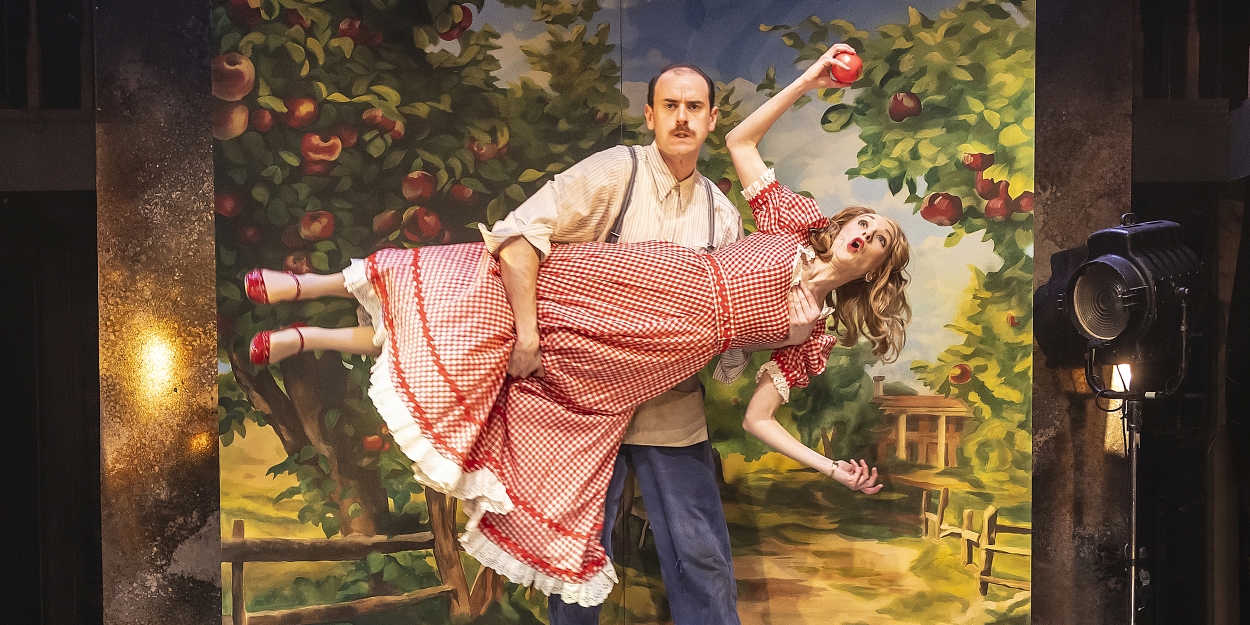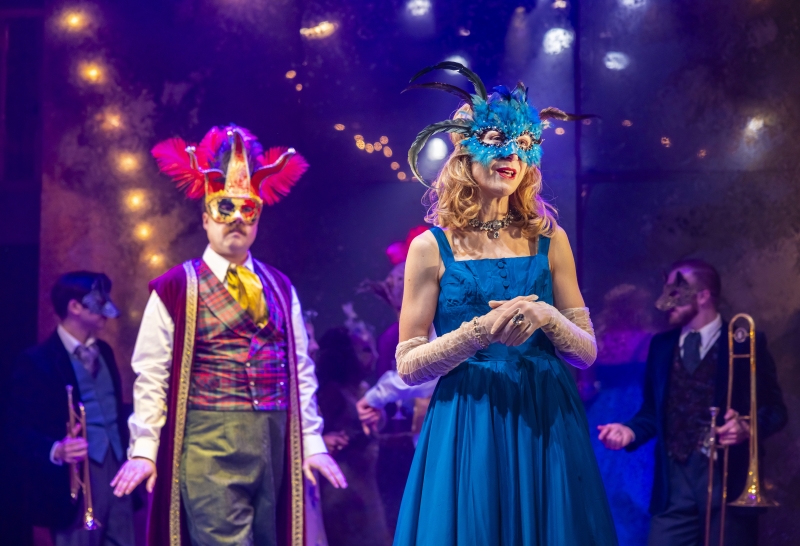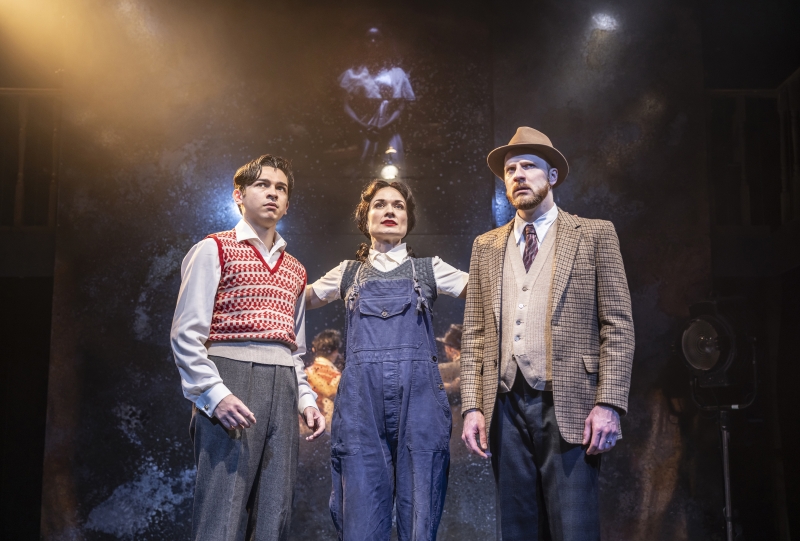Review: MUCH ADO ABOUT NOTHING, Watermill Theatre
Tom Wentworth’s adaptation of Shakespeare’s farcical romance is given Old Hollywood glamour

![]() Much Ado About Nothing is a quintessential Shakespeare farce: mistaken identities, intertwining romances, betrayals and deception all wrapped up with a neat little bow by the end. The same can be said for the screwball comedies that dominated 1930’s and 40’s cinema, so it’s no surprise why Tom Wentworth would want to bring the events of Renaissance-era Messina to the backstage gossip of Golden Age Hollywood.
Much Ado About Nothing is a quintessential Shakespeare farce: mistaken identities, intertwining romances, betrayals and deception all wrapped up with a neat little bow by the end. The same can be said for the screwball comedies that dominated 1930’s and 40’s cinema, so it’s no surprise why Tom Wentworth would want to bring the events of Renaissance-era Messina to the backstage gossip of Golden Age Hollywood.
Beatrice and Benedick are now two big screen actors, constantly throwing barbs at each other while everyone from family to backstage crew can see the blazing chemistry simmering beneath. Paul Hart‘s direction keeps the events in the path to get them together snappy and fast-paced, even when it means condensing scenes down from Shakespeare’s text that lose some of the emotional weight.

Aside from the Hollywood glam and melodrama, the time setting feels appropriate in subtler ways. The unequal gender dynamics of the time come to a head in Hero and Cassio’s whirlwind romance when she’s falsely accused of infidelity during act two. However, it’s Don John’s change that feels the most striking. Now a woman, played with convincing vindictiveness by Augustina Seymour, the gender switch feels rife with possibility as her scheming stems from resentment towards the movie industry pushing her aside purely for being a woman. When she gets punished by the end though, you’re left questioning what justice was really served.
Further immersing the audience into this old-new Much Ado About Nothing is Ceci Calf’s dazzling set design and costumes. Dressing tables and movie equipment are scattered across the stage as a transparent panel reveals the action from behind like an old movie reel. Other scenes including an apple orchard and church cleverly use matte paintings as backgrounds, blurring the lines between Hollywood glamour. Adding to the aesthetic is Robin Colyer’s jazz musical choices, sung beautifully by Priscille Grace‘s Margaret, creating a sense of nostalgia while highlighting the character’s situations.

The actor-muso company are all phenomenal with their own moments to stand out. James Mack brings uproarious laughs as a Benedick filled with machismo bravado, getting smothered in blue paint and electrocuted by studio lights like a Wile-E Coyote cartoon while eavesdropping. Katherine Jack is an equally as compelling and witty Beatrice while letting her vulnerability slip in her monologues.
Thuliswa Magwaza feels believable as ingenue Hero, finding her inner strength in act two. Hayden Wood (The Play That Goes Wrong) is given plenty of times to shine comedically as Dogberry, including a moment of audience participation during the act two opener that left the press audience in fits of laughter. Jack Quarton (The Curious Case of Benjamin Button) dominates the stage figuratively and literally directing the romantic entanglements as Don Pedro.
A creative and no less funny adaptation, Tom Wentworth’s Much Ado About Nothing adds a touch of movie magic to the stage. Brilliantly performed with heart (and Chaplin-esque slapstick) by a phenomenal ensemble cast and filled with dazzling aesthetic choices, this laugh-out-loud riot is a must-watch among the numerous Shakespeare plays coming this spring.
Much Ado About Nothing runs at The Watermill Theatre until 18 May
Photo Credits: Pamela Raith Photography
Comments
Videos

